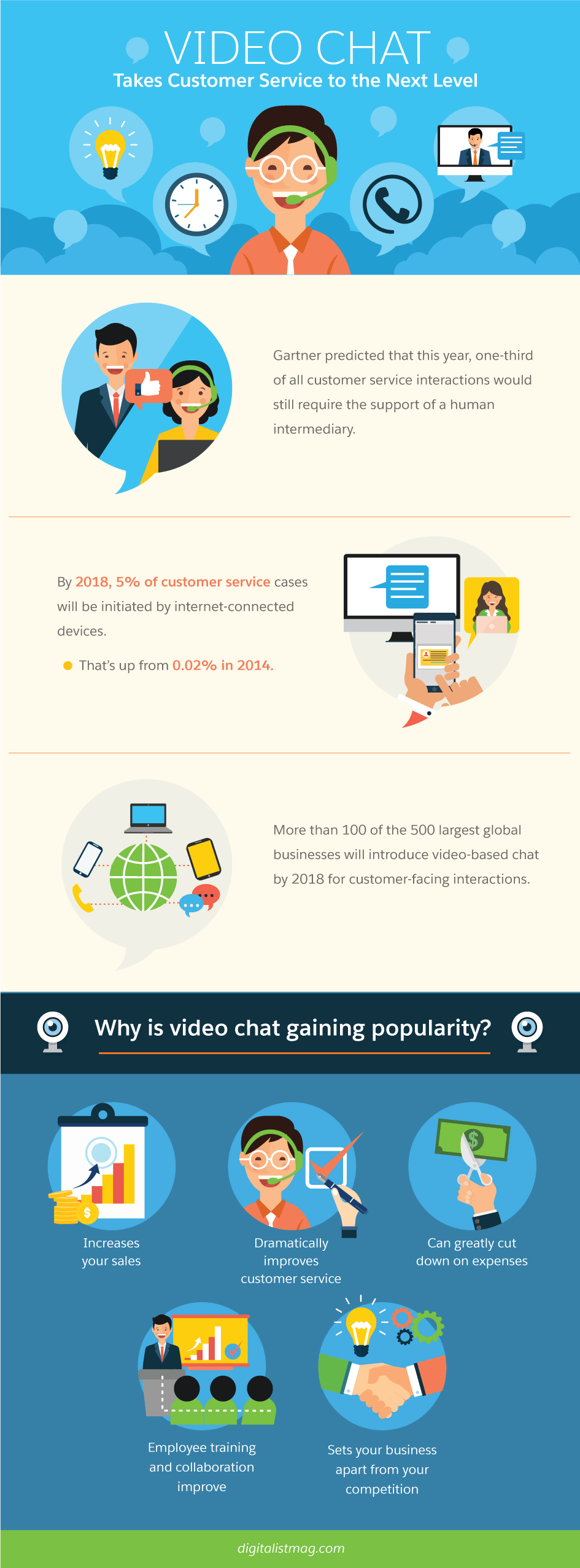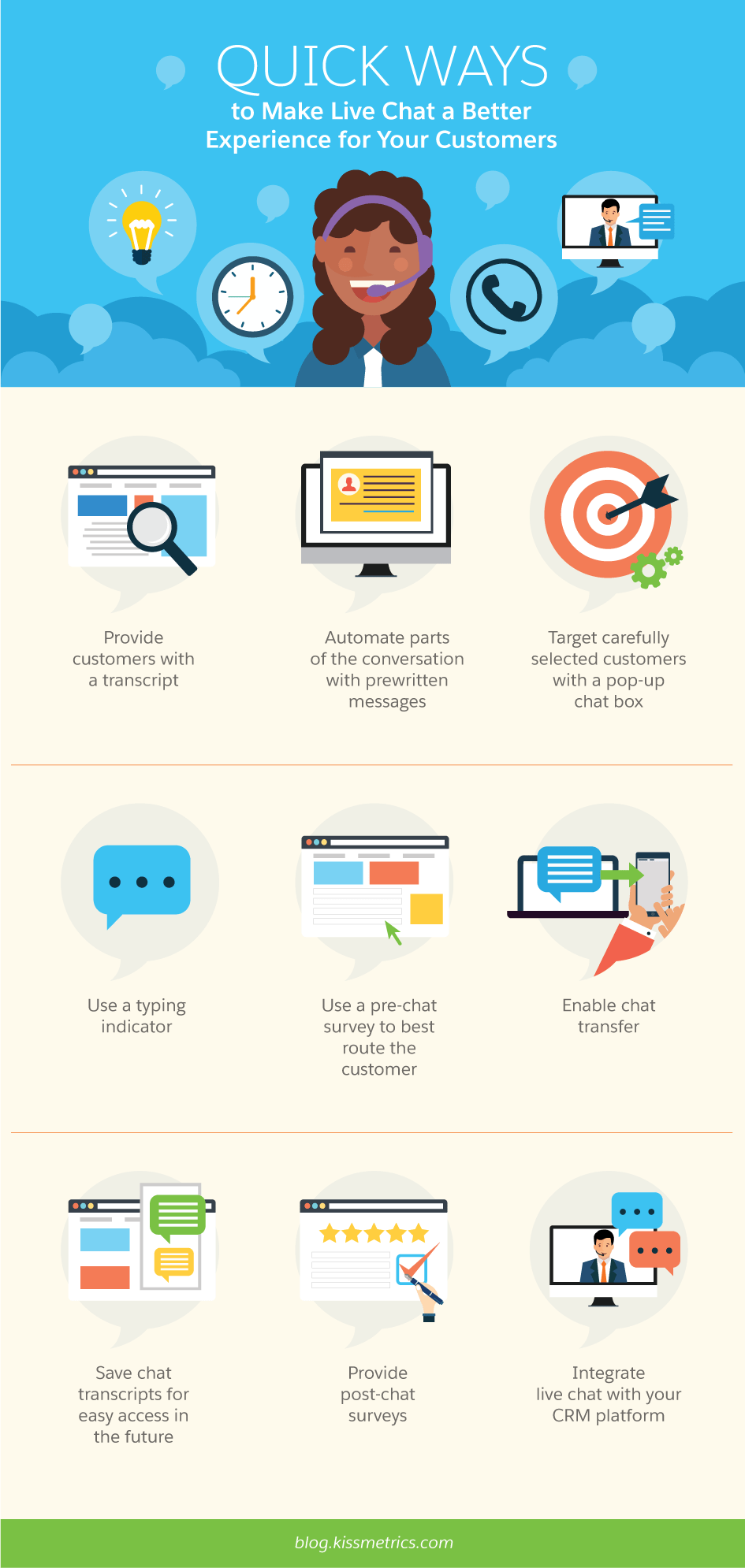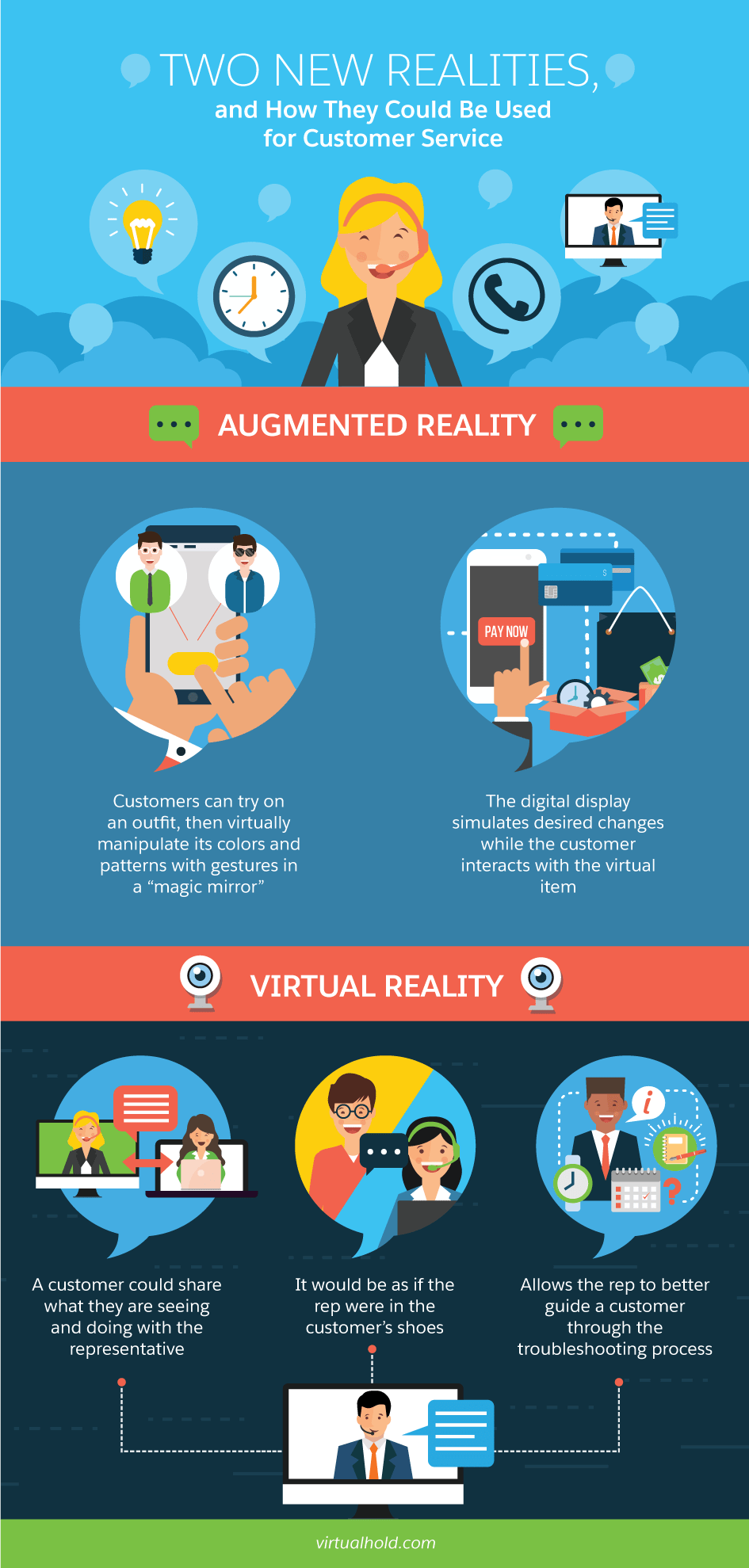Your customer service team members always have limits: They can only take so many calls and answer so many emails every day. This is where technology comes into play and can alleviate the workload. Different types of technology can help your customers — or, at the very least, help you communicate with them — while reps are working with other customers. These tools can also streamline processes.
Businesses must be prepared for the latest technologies, and for those that are on the horizon, in order to improve their customer service capabilities. Stronger customer service will ultimately help your company leave the competition in the dust.
5 Technologies Changing the Customer Service Landscape
One thing we have learned from customer service analysis is that very few customer problems are actually unique. There are trends, patterns, and regular problems that your customers face, and preparation could save your agents a lot of time. The key is “anticipatory technology,” or technology that is able to anticipate the common problems clients face. So whether you use live chat, a phone answering system, or some other automated way to filter your customers to a software-produced answer or to a member of your customer service team, technology can save your customers time — and, ultimately, save your company money.
Video Chat
As many businesses take to ecommerce platforms, video chat is a nice option and an excellent compromise between phone and in-person customer support. Video chat also opens up a variety of options in terms of screen sharing, product troubleshooting, visual explanations, and answering customer questions with visual aids, all of which phone support and chat do not allow.
Video Chat Takes Customer Service to the Next Level
- Gartner predicted that this year, one-third of all customer service interactions would still require the support of a human intermediary
- By 2018, 5% of customer service cases will be initiated by internet-connected devices
- That’s up from 0.02% in 2014
- More than 100 of the 500 largest global businesses will introduce video-based chat by 2018 for customer-facing interactions
- Why is video chat gaining popularity?
- Dramatically improves customer service
- Increases your sales
- Can greatly cut down on expenses
- Employee training and collaboration improve
- Sets your business apart from your competition

If you have a high volume of traffic to your customer service channels, you need to determine which customers will need video chat support before you refer them to that option. After all, you likely do not have the staff to support dozens of video calls a day. In the future, it is possible that call centers and phone support will also offer video chat capabilities, but it’s unlikely you need to offer that option to everyone who contacts your customer service department.
Live Chat
Chat options have almost become a no-brainer on business websites, but live chat is still not universal. Having the option of chat support allows your customers to reach out to your company in an efficient and effective way. Call wait times during high-demand circumstances can be long, and chat allows customer support to respond more quickly, to multiple people at once, and without a long wait time. This also plays into the multi-tasking nature of millennials and the internet generation: Your customers can live chat while simultaneously doing something else.
Quick Ways to Make Live Chat a Better Experience for Your Customers
- Provide customers with a transcript
- Automate parts of the conversation with prewritten messages
- Target carefully selected customers with a pop-up chat box
- Use a pre-chat survey to best route the customer
- Use a typing indicator
- Enable chat transfer
- Save chat transcripts for easy access in the future
- Integrate live chat with your CRM platform
- Provide post-chat surveys

Smart Operator Systems and AI Phone Answering Systems
For companies of all sizes, having an automated answering system or an internet-based phone system on a main business line may be the best option for your customer service department. Incoming calls are filtered to the right department and callers are automatically directed where they need to go.
Be selective about the kind of answering system you use; not all are created equal. There are some answering systems that actually learn from the questions your clients ask and get more functional over time. Other options can frustrate callers if they take too long, don’t work well with the caller’s needs, and don’t ultimately help clients do what they need to do—talk to the best customer service representative for their needs.
You essentially have two paths you can take:
- Go with a more basic phone system that functions via a touch-tone and provides specific options or a directory
- Get a voice recognition system that is well suited for voice commands and can get your customers where they need to go.
In either case, what you want to focus on is picking a system that will not frustrate your customers, but make them feel like the technology you are using is helpful and efficient.
Augmented Reality
First, the difference between virtual and augmented reality:
- Virtual reality: “Computer-generated environments for you to interact with and be immersed in.”
- Augmented reality: “Using technology to superimpose information on the world we see. For example, images and sounds are superimposed over what the user sees and hears.”
Augmented reality has taken off in the past year, and it will likely become an important part of business assistance in the near future. Apps like PokemonGo have gotten users more comfortable with the idea of augmented reality but, more importantly, this type of technology can benefit location-dependent businesses (e.g., retail stores), social media, mobile devices, and other media streams that impact user experience. According to ZD Net (quoting Forrester), augmented reality “will become the new normal . . . Anything short of that will seem like a black-and-white rerun of The Honeymooners on a 1950s TV."
Two New Realities, and How They Could Be Used for Customer Service
- Augmented Reality
- Customers can try on an outfit, then virtually manipulate its colors and patterns with gestures in a “magic mirror”
- The digital display simulates desired changes while the customer interacts with the virtual item
- Virtual Reality
- A customer could share what they are seeing and doing with the representative
- It would be as if the rep were in the customer’s shoes
- Allows the rep to better guide a customer through the troubleshooting process

In the near future, businesses can anticipate internal use of augmented reality being implemented first, with customer service technology as a prime candidate for innovative use down the road. For example, “holoportation enables support agents to project themselves in proximity to customers, providing virtualized on-site assistance—highly personalized and helping customers step-by-step until the solution to a problem is found.”
Robotic and Virtual Assistants
Old movies and television looking into the “future” predicted robotic and virtual assistants — think Amazon’s Alexa, Apple’s Siri, Microsoft’s Cortana, and Google Assistant. Today, they are quickly rising in popularity. These technologies have a lot of potential for customer service use and will likely be developed for businesses as an in-between for a human representative and a virtual stand in.
Some businesses have already started experimenting with virtual assistants. Fiserv, for example, “tested functions that allow consumers to engage with Alexa as they would a bank teller. That means using it for activities like checking account balances or asking for the latest mortgage rates.”
The Takeaway
Many customer service technologies that involve artificial intelligence, automation, and bots are already in use and help businesses large and small extend their customer service reach. While some technologies are not fully implemented yet, we can look out for them in the near future as an innovative option for handling customer service problems.
Technology will never fully be able to replace people when it comes to the customer service experience. Yes, it can assist and streamline customer service efforts, but having a human representative to speak and interact with customers is likely going to remain a best business practice.
Further, before you implement new tools as part of your customer service experience, test them! Make sure the technology you choose benefits your customer base. You also have to remember your audience. If your target consumer is tech savvy, an expert social media user, and comfortable using live chat, then having a more automated, online approach can work well. However, if you are dealing with an older audience that just wants a real person on the phone, keep that in mind when streamlining your customer service tools. This doesn’t mean that technology is not relevant to your business; you just need different tools.
Learn all the ways you can make your customer service more effective by reading our free eBook, “5 Ways to Make Service Easy for Today’s Customers.”
Share "The Future is Here: Automation, AI, and Bots in Customer Service" On Your Site




